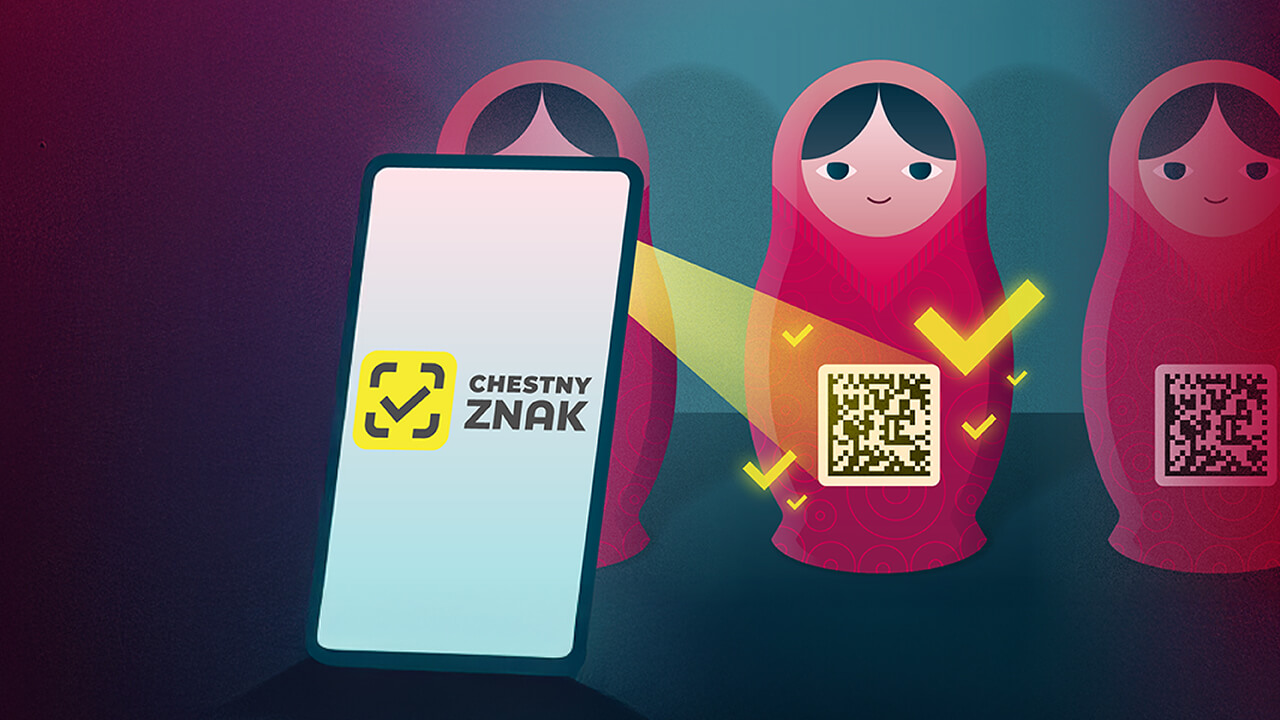Chestny ZNAK: How it affects the food and beverage industry in Europe

3 min read
Chestny ZNAK, the Russian digital traceability system, has already changed the way supply chains are managed across many product categories, including food and beverages. As Europe moves towards stricter regulations on traceability and transparency in imports, we can expect to see similar requirements across the EU.
But what do these developments mean for businesses operating in the food and beverage sector?
What is Chestny ZNAK?
Chestny ZNAK is the national digital traceability system implemented in Russia. It aims to track the progress of a product from the very first moment, in production, to the final stage, that is, the moment it reaches the consumer.
This tracking is done through unique digital codes, called Data Matrix, and each product is recorded and monitored at every stage of the supply chain, in order to combat counterfeiting and ensure quality and transparency in the market.
Chestny ZNAK was started for the control of medicines and tobacco products. Today it is also applied to food and beverage products, becoming a reference point to ensure both the quality and legality of the products, until they reach the shelves.
How does Chestny ZNAK work in the food industry?
In the food and beverage industry, Chestny ZNAK works by placing unique digital numbers on products and packaging. These numbers are recorded in a central database and scanned at every stage of the supply chain, from production to delivery.
This makes traceability simpler than ever, throughout the entire product lifecycle.
What is the aim of the Chestny ZNAK application in the food industry?
The Chestny ZNAK application in the food industry aims to create a market that is safer and more transparent, for both consumers and businesses.
Combating counterfeiting and tax evasion
The unique numbers given to each product allow for authenticity checks and reduce the circulation of counterfeit products.
Ensuring quality and authenticity
Since each product is monitored from its production to its final delivery to the consumer, its quality and origin are confirmed.
Enhancing transparency in the supply chain
Each product can be scanned at every stage. This creates transparency and strengthens trust between producers and consumers.
Consumer protection
The consumer also has the ability to scan the Data Matrix code and be informed about the authenticity and safety of the product they choose.
Why is Chestny ZNAK important for businesses in Europe?
Currently, Chestny ZNAK is a mandatory tool for businesses exporting food and beverages to Russia, and compliance with the system is necessary for customs clearance and distribution of products on the market.
Businesses already cooperating with Russia therefore need to integrate the process of placing Data Matrix codes and registering their products on the Chestny ZNAK platform to ensure the smooth entry of cargoes into the country.
At the same time, although there is no corresponding obligation in Europe, there is a clear trend towards stricter traceability and transparency in imports, in order to protect consumers and combat counterfeiting.
Chestny ZNAK can act as a model for how to organize the monitoring of a product’s progress throughout the supply chain, setting the tone for what may follow in the European market.
The Russian system therefore shows the direction the market is taking with more transparency and traceability for each product. Whether a company exports to Russia or simply operates in Europe, it must be aware of and monitor developments in order to be prepared for the future of the market.
Frequently Asked Questions about Chestny ZNAK in the Food Industry in Europe
How does Chestny ZNAK work in the food and beverage industry?
Each product and packaging receives a unique digital code, which is recorded in a central database. This code is scanned at every stage of the supply chain, from production to delivery, allowing for full traceability and transparency.
What is the purpose of implementing Chestny ZNAK in food?
The main goal is to create a safer and more transparent market and combat counterfeiting, as well as ensure quality and consumer protection. This strengthens trust in the supply chain.
Is the use of Chestny ZNAK mandatory in Europe?
For companies that do not export to Russia, Chestny ZNAK is not mandatory for products that are marketed within the European Union. However, stricter regulations on traceability in food and beverages are gradually expected.
What information does the Data Matrix digital code contain?
The code includes elements such as the global trade item number (GTIN), unique serial number, verification code (crypto code), expiration dates, and other elements that allow for full identification and verification of the product.
How does the consumer benefit from Chestny ZNAK?
The consumer can scan the Data Matrix code via a special application and verify the authenticity, origin, and quality of the product they are purchasing, enhancing security and trust in the market.


